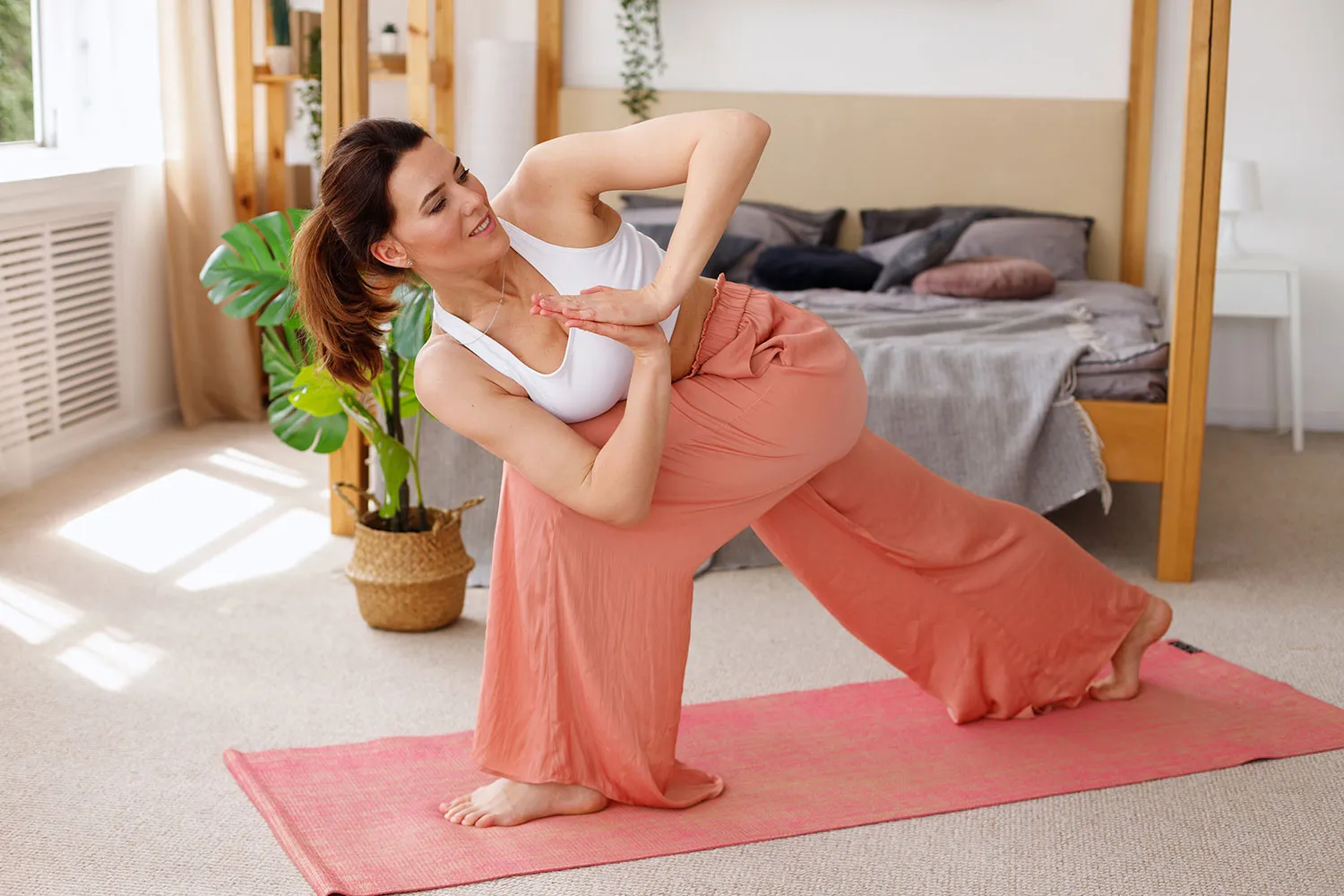
Many people still struggle to squeeze in their workout, but have you considered a lunch break workout? Many valid reasons exist for not exercising: Juggling a demanding career with family commitments normally demands long hours. You are responsible if you spend your spare time managing fantasy football teams or watching Netflix dramas. A number of health problems have been linked to an inactive and sedentary lifestyle. Wouldn't it be more convenient to train during your lunch break if you are unwilling to do so after work?
If you have an hour to spare in the middle of the afternoon, that is more than enough time to get a good workout in. Even though it takes half that time to drive to the gym, change, shower, and return to work, a 30-minute workout puts you back on top of your game and puts you miles ahead of your office mates. Working out for only 30 minutes is always better than not exercising at all-and getting in the work will lead to healthier habits that may lead to other ways to extend the workout in the future.
In order to create an effective lunch-hour workout, you must consider it as an option. The following are some reasons you may be able to benefit from it.
- Exercise during your lunch break does not interfere with your sleep or evening leisure time with your family, nor does it require you to go to bed early in order to wake up earlier in the morning. A midday energy boost is also provided as well as a mental break from work. Consistent exercise boosts energy, which leads to improved focus and productivity. It may even become apparent that you are more efficient during work hours and need to take less work home on weekends and evenings.
- Setting limits around your work and your well-being is a key component of taking a break. Lunch break workouts are less likely to be missed because of late nights and poor sleep, or because of evening engagements. Furthermore, you will also be able to avoid the chaos that often surrounds packed gyms in the early evening hours.
- Having a gym nearby is ideal. Some employees work in buildings with gyms, and their employers value health and wellness. Regardless of whether a facility is equipped with adequate equipment or amenities, your primary concern is convenience. If your turn-around time is under 15 to 20 minutes, you'll get a great workout. Find out what gyms are available in your immediate area by searching online. A small private facility or a group exercise studio may be located nearby that you would be surprised to find. In order to commit to exercising, some people hire a trainer or enroll in a class.
- Active and healthy employees are often happier, more productive, and take fewer sick days. Having the flexibility to prioritize your fitness makes you less likely to leave. If you work the agreed-upon hours, most employers are flexible about working hours. A 15-minute early arrival or a 15-minute late arrival means more time to get to and from the gym.
- Express your interest in maintaining your physical and mental health, productivity, and energy and suggest some flexibility during your lunch break—while ensuring your boss doesn't take advantage of his gym generosity (turning an hour into a three-hour workout won't do any good). Ignorant (or powerless) supervisors will refuse. As a boss, learn to prioritize your health (and that of your employees). Entrepreneurs are notorious for sacrificing health for shortsighted productivity illusions.
- If you cannot reach a gym, you can train using bodyweight circuits if you find a space to hide out and train. When there are no other options and the weather is reasonable, going for a walk during your lunch break can be one of the most energizing and health-promoting activities you can engage in.
Workout Strategies For Lunch Breaks
A great workout might require an hour, and you won't bother if you don't have this time. The life-changing effects of just 30 minutes of exercise every day would be amazing, especially if you start from scratch. Whether you are a gym diehard or not, 30 to 45 minutes can get you a lot done. In order to make this work, we need to modify our tactics.
Make Your Warmup Shorter
Image source Google/Pinterest
Warm up with 15 minutes of steady-state cardio. Light sets of each exercise are an effective warm-up. Alternatively, you can do the foam rolling and stretching between warmup sets if you feel better doing them. Stretching and foam rolling do not reduce the risk of injury when lifting. They don't create any lasting increase in muscle length or flexibility, except for extreme long-duration stretches that few people would do. If you stretch or foam roll shortly before lifting, you may have improved short-term range of motion to allow you to lift easier (by temporarily relaxing tense muscles). After each set, stretch or foam roll to gain this extra range of motion.
Make Rest Breaks Shorter
The importance of rest in building strength and muscle cannot be overstated, especially if we are scrolling on our phones. Between sets, use your phone as a timer (most people bring their phones for music). You'll breeze through your workout if you leave it in your locker. Warmup sets don't require much rest. It buys more time between hard-working sets. Take 90 to 120 seconds between working sets to recover for the important lifts near the start of your workout. Rest intervals between sets of accessories and isolation exercises should be shortened.
Make Use Of Dropsets
Image source Google/Pinterest
By extending some of your sets beyond failure, you can get more training effects during short workouts. For each exercise, use drop sets on the last set (where it's safe to train to failure). Combine your last two sets of many exercises with a drop set. Maintain strict form until you reach failure and lower the weight immediately. If you want to feel intense tension in the muscles, do one to three drops. Strict form failure is not recommended for heavy full-body exercises where failure may mean getting stuck under a barbell, such as bench presses and squats. Dumbbells, machines, and cables often work better with drop sets.
Make Use Of Supersets
Image source Google/Pinterest
Perform two exercises back-to-back with minimal rest between them to reduce your time while retaining the effectiveness of a longer workout. Opposing (biceps vs triceps) or unrelated exercises (chest and core) allow one muscle group to rest while the other works. Exercises that can be done at the same station and require minimal complexity and setup are recommended. Be considerate of your fellow members and don't hoard equipment at the same time.
Do Cardio Separately
Image source Google/Pinterest
Doing cardio before or after strength training may be a habit. If time is short, separate lifting from cardio. By doing this, you may not get too sweaty and need to shower before returning to work. Make cardiovascular activity a priority outside work hours. Taking part in outdoor group activities, participating in recreational sports leagues, and doing gym cardio one evening and one weekend can help.
Take A Few Big Steps Forward
Image source Google/Pinterest
Variety isn't as important as you think. As long as you train hard, you will get all the benefits of lifting, regardless of how many lifts you do. Spend most of your time on the big lifts, prioritize strength, and use supersets and drop sets to fill out the rest. Prioritize squats, deadlifts, and lunges. Before cable press downs, do bench and shoulder presses. Forearm curls come after chin-ups and rows. You should choose exercises that move the most load in the least amount of time.
Concentrate
Image source Google/Pinterest
The gym can be intimidating for those with headphones on and hats covering their eyes. Discretion is not tolerated. Others like the social aspect, seeing friends there. Besides getting lost in conversation, you may forget your next set for 10 minutes. Keeping your workout on track means setting a timer and politely cutting off conversations.
Find an Accountability Partner
Image source Google/Pinterest
It may be an internal challenge. The motivation may be unreliable and discipline may be lacking. Getting an accountability partner may be the answer. It's easier to make a commitment to join a friend when breaks are coordinated. Workouts should be structured so one of you rests and the other lifts.
Make Use Of A Coach
Image source Google/Pinterest
The idea of working out during lunchtime seems great. The problem often lies in the execution. Hiring a coach will help you hold yourself accountable. Over the years, many clients have booked lunch break sessions as a non-negotiable part of their training schedules. They are held accountable by the appointment. If you can't find a trainer for the time you need and are more independent, consider having an online coach plan your workouts for you.
Working out at lunch can reduce the risk of lifestyle diseases over the long term. Maintaining your energy and productivity is a great way to enjoy more downtime with your family and friends. Workouts can be done in less time, and they can enrich your life as well.
By Rashmi Goel
.


